Discover the treasures of the Vatican Museums with Musement.
Rome is one of the world’s most fascinating cities, a bustling metropolis since antiquity where history, art, and culture have merged for centuries to create the unforgettable cityscapes that have rendered Rome the photogenic darling that we all know and love today. In 2014, Rome was acknowledged with an Oscar when Paolo Sorrentino’ took home the Oscar for The Great Beauty, a film in which Rome is a character in and of itself. Sorrentino chose the Eternal City as the backdrop for The Young Pope, his acclaimed television series.
The show stars Jude Law as Pope Pio XIII. As Pope, it should come as no surprise that he lives and works among the impressive Vatican palaces and Sistine Chapel. However, none of these locations were actually used while filming. The Sistine Chapel and most of the wonders of Vatican City are open to the public, and Musement guides you through the discovery of these must-see attractions.
Apollo Belvedere
The majesty of the handsome Greek sun god is exquisitely captured in this marble sculpture found in the Courtyard of the Statues of the Vatican Museums. Depicted nude with a mantle falling from his right shoulder over the left side of his bust, Apollo stands proud and regal as a man who has just shot an arrow. His head is surrounded by a strophium, an ornamental band symbolic of his divinity. The statue, which was created in 320 A.D., is believed to be a replica of a lost bronze statue that dates back to the middle of the second century B.C.
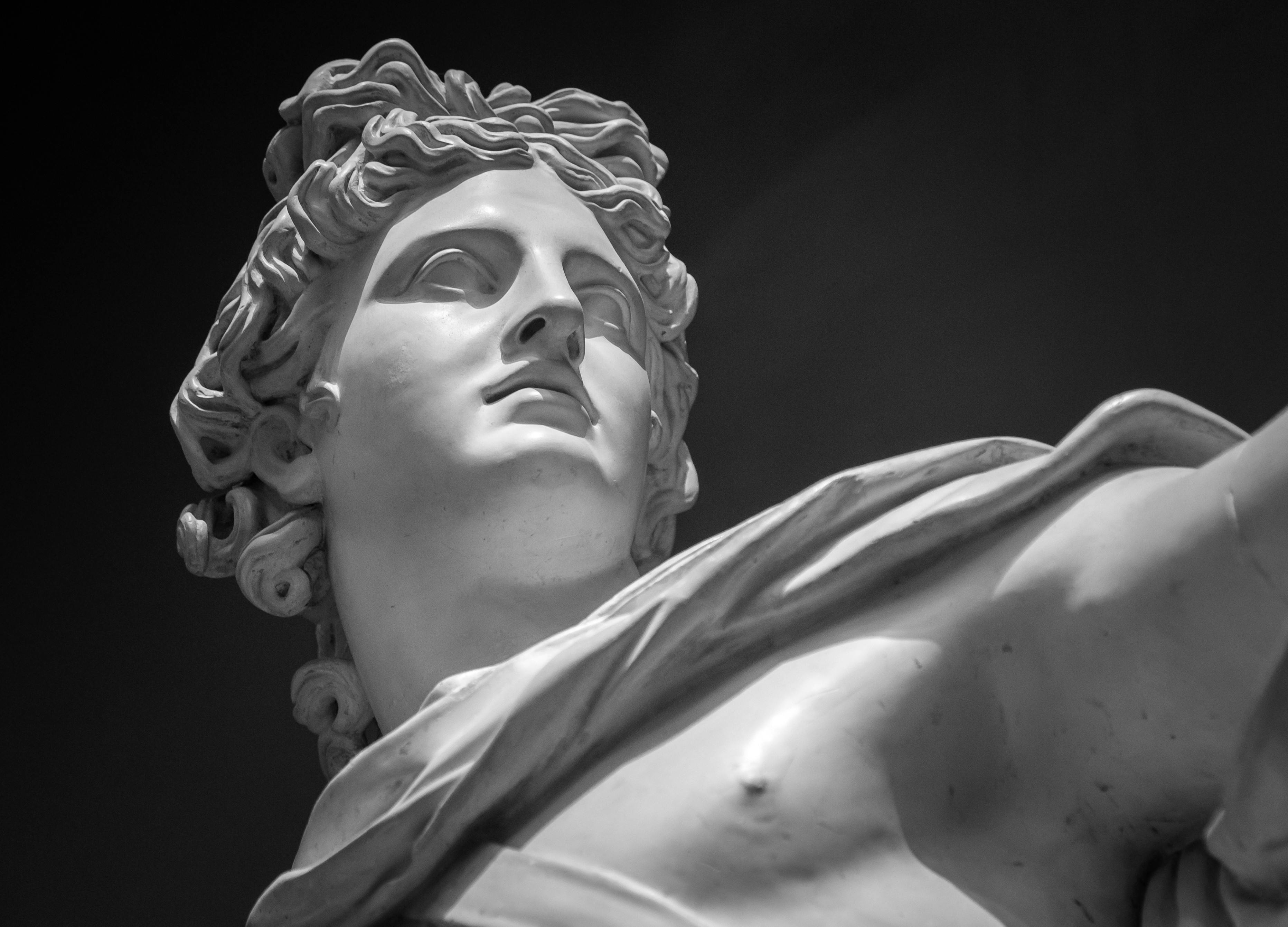
Details of the Belvedere Apollo statue
The Belvedere Torso
Mystery surrounds this imposing marble torso signed by sculptor Apollonio. Lacking its head, arms, and legs, the torso’s original representation is difficult to determine, but there are many theories out there. Some are convinced it represents the Greek hero Ajax Telamon contemplating suicide after Ulysses disrespected him. Some argue it portrays Hercules at rest after having completed the twelve labors, while others think the sculpted torso belongs to Cyclops Polyphemus, the giant blinded by Odysseus in Homer’s Odyssey. Despite its incomplete form, the beauty of this statue is indisputable, so much that Michelangelo was so struck by the perfection of its lines that he refused to restore it and add the missing parts. The artist actually used it as a model to paint the body of Jesus Christ in the Sistine Chapel’s Last Judgment fresco. The Belvedere Torso can be seen in the Museo Pio Clementino in the Sala delle Muse.
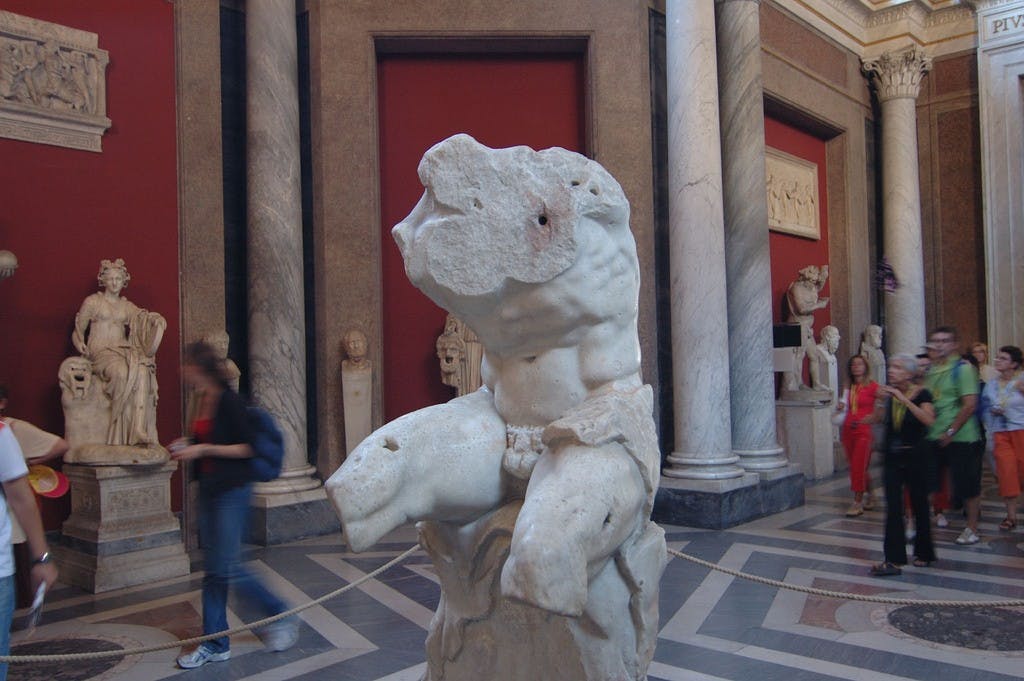
The Belvedere Torso; Photo credit: Gaspa via Visual hunt / CC BY
Laocoon and his Sons
This famous ancient sculpture in the Museo Pio Clementino represents the story of Laocoon and his sons. This episode is told in the second book of the Aeneid and its bleak atmosphere makes it one of the most frightening and gruesome moments in Greek and Latin mythology. Laocoon, who was the priest of the Trojans, strongly opposes the entrance of the wooden horse in the city, but, before he can persuade his fellow citizens of the danger, Athena and Poseidon – who sided with the Achaeans – release two monstrous snakes from the sea to devour and drown the priest’s two children, and then the priest himself. The terror of Laocoon and his sons is vividly felt and evocatively depicted in the expressions of their marble faces. It is a lesson to onlookers: never cross the goddess, Athena!
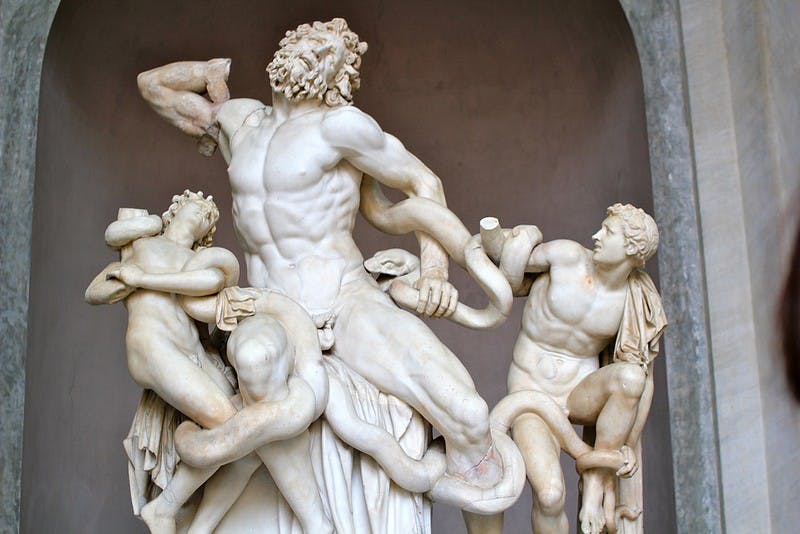
Laocoon; Photo credit: ohsarahrose via VisualHunt.com / CC BY-ND
The Raphael Rooms
The Raphael Rooms are named for the frescoes that decorate it, created by the iconic Renaissance painter with the aid of students from his own workshop. The rooms’ richly frescoed walls have diverse subjects, some represent the victory of Christianity over paganism while others aim to complement the figure of Pope Leo X; some describe God’s protection of his church while still others celebrate the categories of knowledge, the latter of which is located in the Room of the Segnatura, which was presumably to have been the Pope’s small office and library. One of the most famous frescoes – not just in these rooms but in all of art history – is undoubtedly The School of Athens, which depicts the most historically important philosophers gathered in the same building. This fresco by Raphael is a perfect example of the painting technique of perspective, and Plato and Aristotle conversing are seen in the vanishing point. Interestingly, Raphael has placed his self-portrait within the painting: Can you find it?
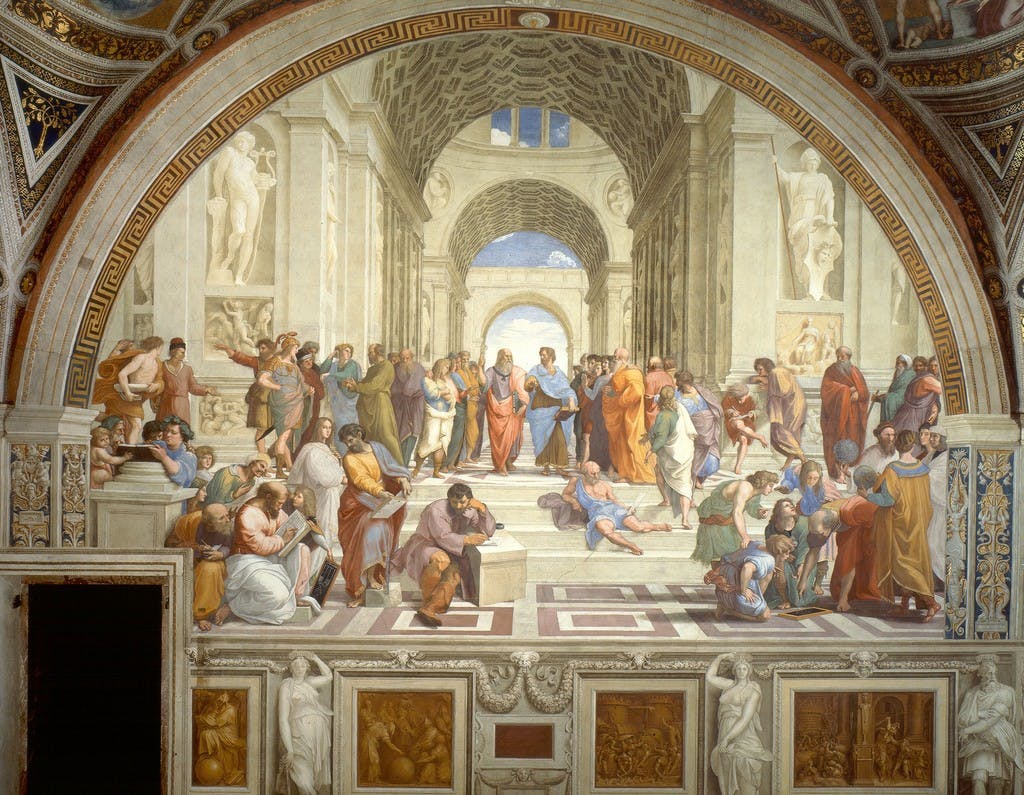
The fresco by Raffaello “The School of Athens” in the Signature Room; Photo credit: Raymond Yee via Visual Hunt / CC BY
The Galleries
Inside of the Vatican Museums, there are three adjacent tunnels that lead to the Sistine Chapel. Each gallery is unique and characterized by particular visuals. In the first gallery called Gallery of the Candelabra, the lavishly decorated ceilings are complemented by spectacular marble candelabra that alternate with colored marble columns. The Tapestry Gallery is instead covered with handmade tapestries created using the drawings of Raphael and his school, while the walls of the Gallery of Maps are adorned with maps that depict the different regions of Italy. Not only do these maps have an insurmountable artistic value, they are also a testimony to the geographical boundaries of the 16th century and are intended to symbolize the spiritual unity of Italy.
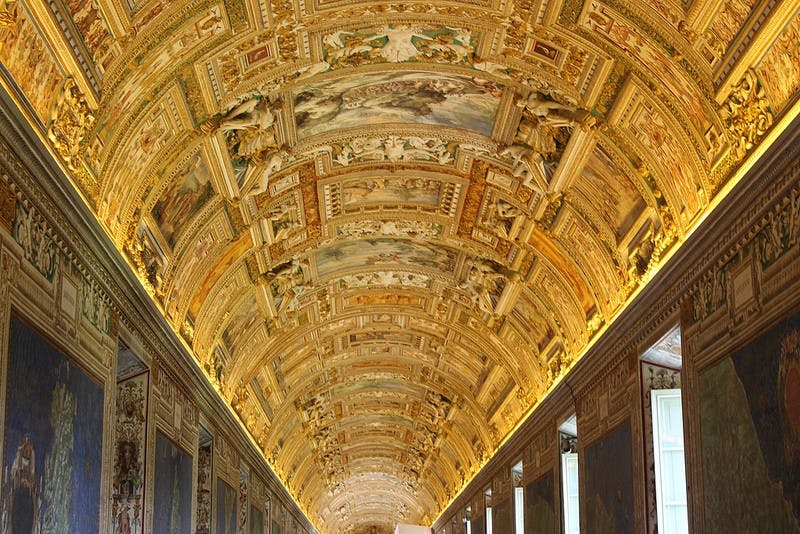
The impressive Geographical Map Gallery; Photo credit: philippflenker via VisualHunt / CC BY
The Sistine Chapel
The aforementioned decorated galleries all lead up to the iconic Sistine Chapel. This sacred place will leave you breathless thanks to the complexity, grandeur, and beauty of Michelangelo’s frescoes, which contrast the simplicity of red bricks that cover the building’s exterior facade. Constructed between 1475 and 1481 during the papacy of Pope Sisto IV, the Sistine Chapel was painted by the most paramount Italian painters such as Botticelli, Perugino, and Pinturicchio. Famously, the vault and wall above the altar are signed by the acclaimed Michelangelo who painted the ceiling and the Last Judgement on the altar wall. This wonderful place attracts tens of millions of visitors every year and is still the site of the papal conclave.
Fun fact: In the Creation of Adam that depicts a representation of God surrounded by angels holding his cloak, be sure to spot the silhouette of a human brain.
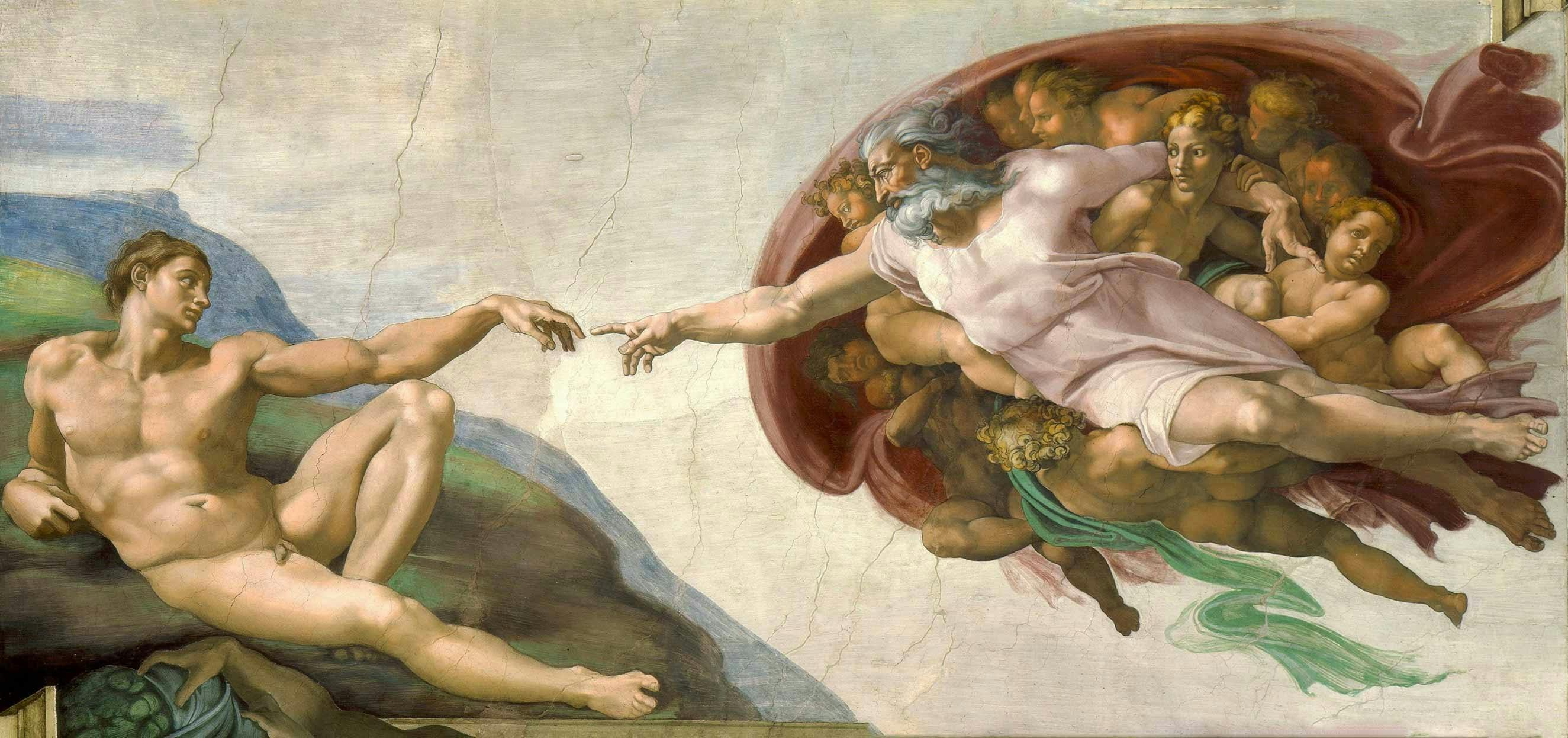
The famous fresco “The Creation of Adam” by Michelangelo inside the Sistine Chapel
Saint Peter’s Church
We end our journey through the Vatican with its foremost symbol: St. Peter’s Basilica. In addition to the iconic dome, the Holy Door, and the colonnade characterizing its square, you can admire works of art such as the Baroque Baldacchino and Michelangelo’s compassionate Pietà, a statue of the Madonna holding the seemingly lifeless body of Jesus Christ in her arms.
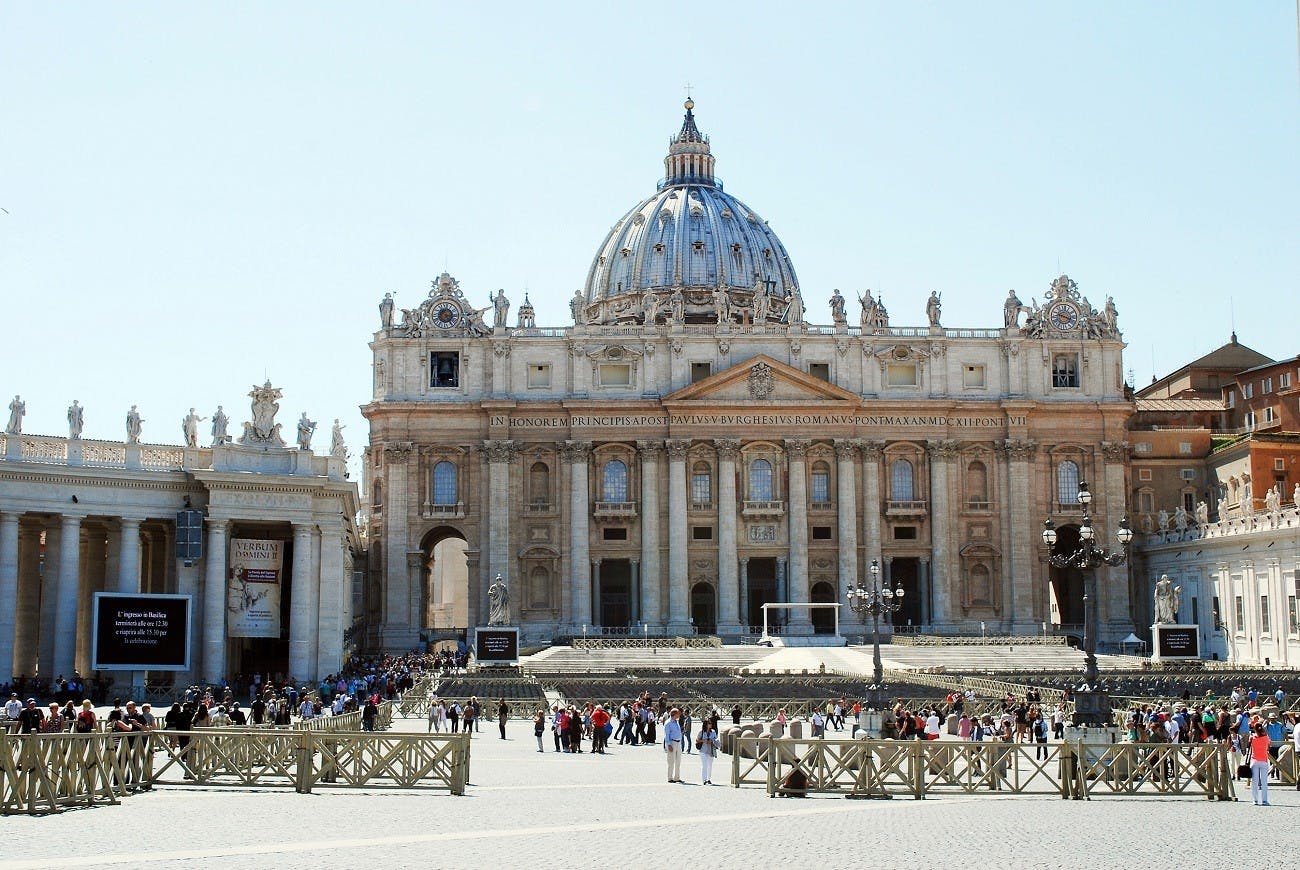
Saint Peter’s Basilica
